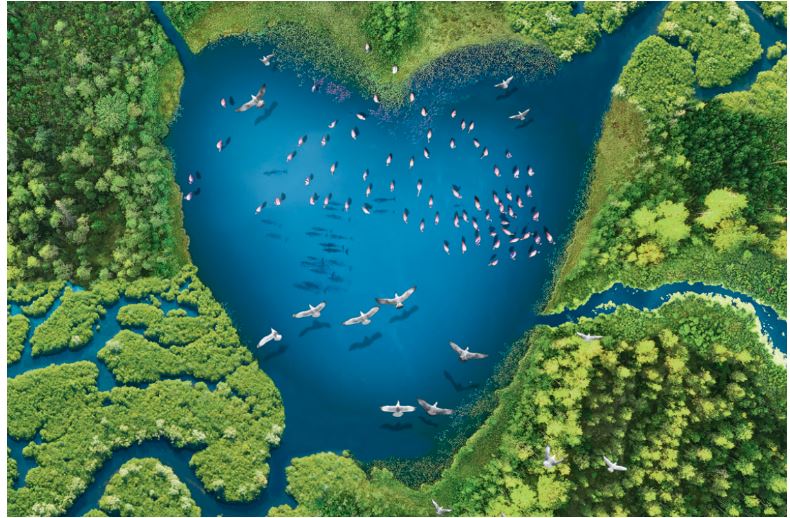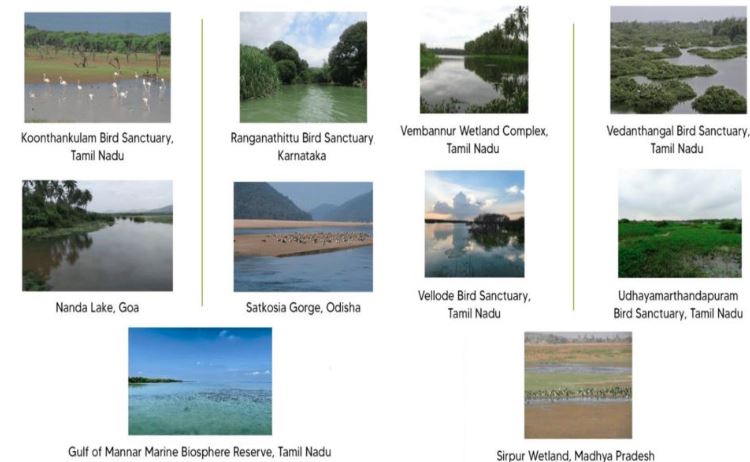New Ramsar Sites in India
- Posted By
10Pointer
- Categories
Environment
- Published
5th Aug, 2022
-
Context
India has designated 10 more wetlands as Ramsar sites, taking the total tally of Ramsar Sites in India to 64.
- The 10 new sites include Six (6) sites in Tamil Nadu and One (1) each in Goa, Karnataka, Madhya Pradesh and Odisha.

About 10 New Ramsar Sites
- These are the 6 sites in Tamil Nadu -
- Koothankulam Bird Sanctuary.
- Gulf of Mannar Marine Biosphere Reserve.
- Vembannur Wetland Complex.
- Vellode Bird Sanctuary.
- Vedanthangal Bird Sanctuary.
- Udhayamarthandapuram Bird Sanctuary.
- Satkosia Gorge in Odisha.
- Nanda Lake in Goa.
- Ranganathittu Bird Sanctuary in Karnataka.
- Sirpur Wetland in Madhya Pradesh.

About Ramsar Convention on Wetlands
- The Conservation and Sustainable use of Wetlands was signed at a city of Iran called Ramsar in 1971.
- It is also known as the Convention on Wetlands.
- Ramsar Convention is a convention on wetlands that was signed in 1971 in the Iranian city of Ramsar.
- The negotiations for the convention started in the 1960s by the different countries and NGOs for the protection of wetland habitats of migratory waterbirds.
- Finally, it came into force in 1975.
- February 2 is celebrated as International Wetlands Day as the Ramsar Convention was signed on February 2, 1971.
- The Ramsar Convention works with the collaboration of the following organizations:
- International Union for Conservation of Nature (IUCN).
- Birdlife International.
- International Water Management Institute (IWMI).
- Wetlands International.
- Wildfowl & Wetlands Trust (WWT)
- WWF International
- Under the “three pillars” of the Convention, the Contracting Parties commit to:
- Work towards the wise use of all their wetlands.
- Designate suitable wetlands for the list of Wetlands of International Importance (the “Ramsar List”) and ensure their effective management.
- Cooperate internationally on transboundary wetlands, shared wetland systems, and shared species.

